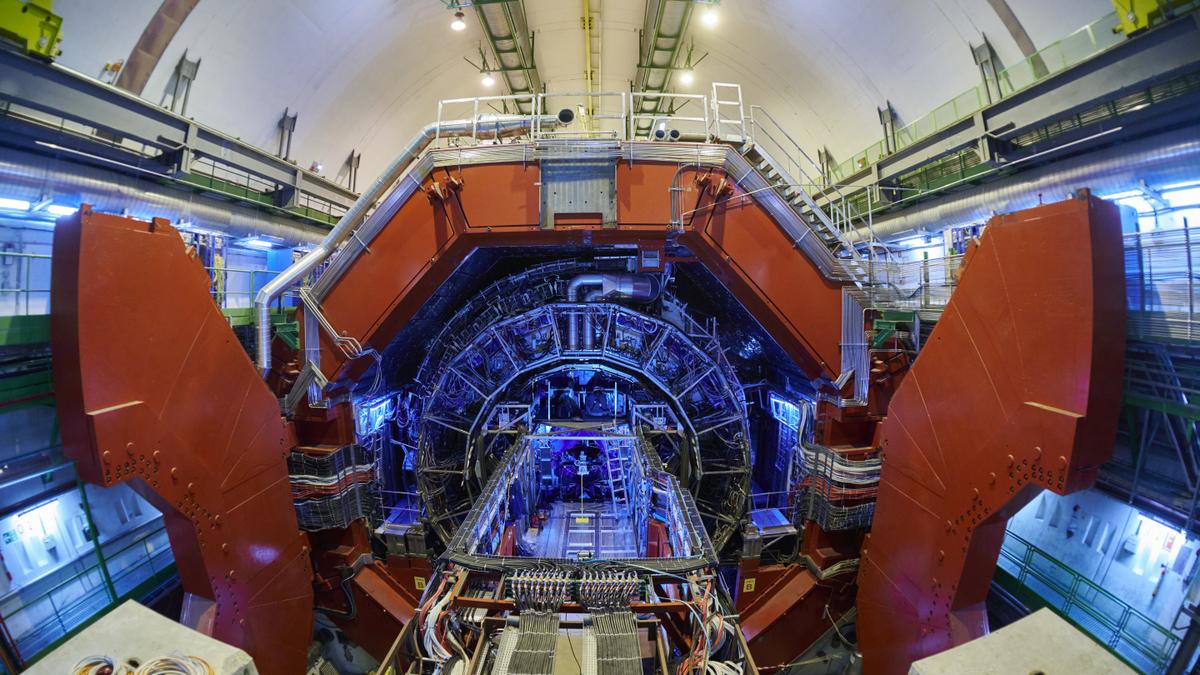An image of the ALICE detector, which researchers used to track near-miss collisions between lead nuclei in the LHC.
| Photo Credit: CERN
In India and other parts of the world, some ancient natural philosophers practised an enterprise called alchemy. It was in some ways an early form of chemistry, but guided by less-than-scientific ideas of the time. One form of alchemy was concerned with converting base metals like lead into gold. We know today that doing this requires us to change the composition of the nucleus of the lead atom, which is not easy.
In a new study, scientists working with the Large Hadron Collider (LHC) in Europe have reported turning lead atoms into gold atoms for a fraction of a second.
The LHC is famous for accelerating protons to high energies and smashing billions of them head on. But in the study, the researchers energised heavy lead nuclei and had them pass close to each other, without colliding, giving rise to so-called ultra-peripheral collisions. Even though the nuclei don’t physically touch, they interact via their powerful electromagnetic fields, which caused some of the nuclei to break up. The team found that when a lead nucleus emitted protons, it essentially became a gold nucleus.
Also, current theoretical models could only roughly predict these emissions: the researchers said this was because their models tended to underestimate how often one or two protons were emitted. In other words, scientists have room to improve their understanding of how these electromagnetic breakups work.
Published – May 13, 2025 04:00 pm IST
